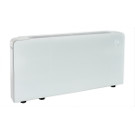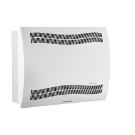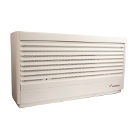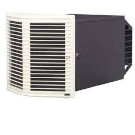Newsletter
PoolStore no longer use Facebook or Twitter. To get the latest news, offers and top tips please sign up for our newsletter.
Trusted Merchant

Trustpilot
We joined Trustpilot in Spring 2023.
Product Listing
Swimming Pool Dehumidifiers
Essential information on Swimming Pool Dehumidifiers.
If you have an indoor swimming pool then maintaining the correct humidity of the air in the pool room is essential. To do this you will have to have a swimming pool dehumidifier.Humidity is another word for moisture or water vapour in the air. Air holds water vapour within it, the warmer the air the more water it can hold. When warm wet air meets a cold surface the water vapour condenses and forms condensation. It is easy to see condensation on a window and it does no damage to a window, but the water will very soon soak in to your floor, walls, roof, and window frames causing corrosion, wood rot, mould and bacteria growth and an unhealthy environment. High humidity encourages the growth of mould and hence the deterioration of the building. The ideal relative humidity for a pool room should be between 60% and 65%. Above 70% the air is saturated with water vapour, making the atmosphere uncomfortable. Below 60%, the air is too dry and will be unpleasant to swimmers when they leave the water.
How does a dehumidifier work?
There are many types of dehumidifier but a swimming pool dehumidifier is designed specifically to deal with the high moisture loads that are found in an indoor swimming pool hall. The technology required within a dehumidifier is very similar to that found in refrigeration and in heat pumps. That is why many manufacturers of swimming pool heat pumps also make swimming pool dehumidifiers.
The dehumidifier contains large metal plates that are cooled by refrigerant gases via a gas compressor. The cold plates encourage the moisture in the air to condense upon them and the condensate drips off the plates to a gathering tray and is then pumped away. Like a heater has a thermostat to regulate temperature a dehumidifier has a humidistat to maintain the correct humidity as set by the owner.
How do I get the right sized dehumidifier for my pool?
There are many things to take in to consideration when specifying a swimming pool dehumidifier. The starting point is the surface area of the swimming pool. From that you can estimate the litres per day of water vapour produced. You can then compare that figure to the output of the various dehumidifiers. Whilst you may find one dehumidifier that can cope with all the moisture often it is better to buy two smaller ones.
Some swimming pool dehumidifiers don’t just take the moisture out of the air, they can warm the air that they put back in. They do this, generally, in two ways. By having an electric heater built in or by being connected to a domestic heating system, the same one that would heat radiators. This is called the low pressure hot water system, abbreviated to LPHW.Because the dehumidifier has cold plates within it, it can freeze up if the temperature drops. It is important, therefore, to maintain the pool room above 17C or of you don’t do this have a defrost facility in the dehumidifier.
What else can I do to reduce humidity?
The surface area of the pool is not the only consideration. The size of the pool room is also important and the flow of air through it. A ventilation system may also be needed in big rooms. Ventilation will just remove the moist air in the pool room and replace it with air from outside. This will help to reduce the amount of work the dehumidifier has to do.By far the best way to reduce humidity is to cover the pool with a swimming pool cover and always replace it after using the pool.
What else should I consider?
If your pool hall is very small compared to the swimming pool then you have to consider the electrical regulations regarding where you can position electrical equipment relative to bodies of water. Generally speaking, it should not be possible to touch the controls of the dehumidifier whilst in contact with the water. If this cannot be achieved then you will have to position the unit in another room or outside and duct the air into and out of the room.
We always try to sell at the lowest prices - if you see one of our products cheaper elsewhere please email us and we will do our best to beat the price.





